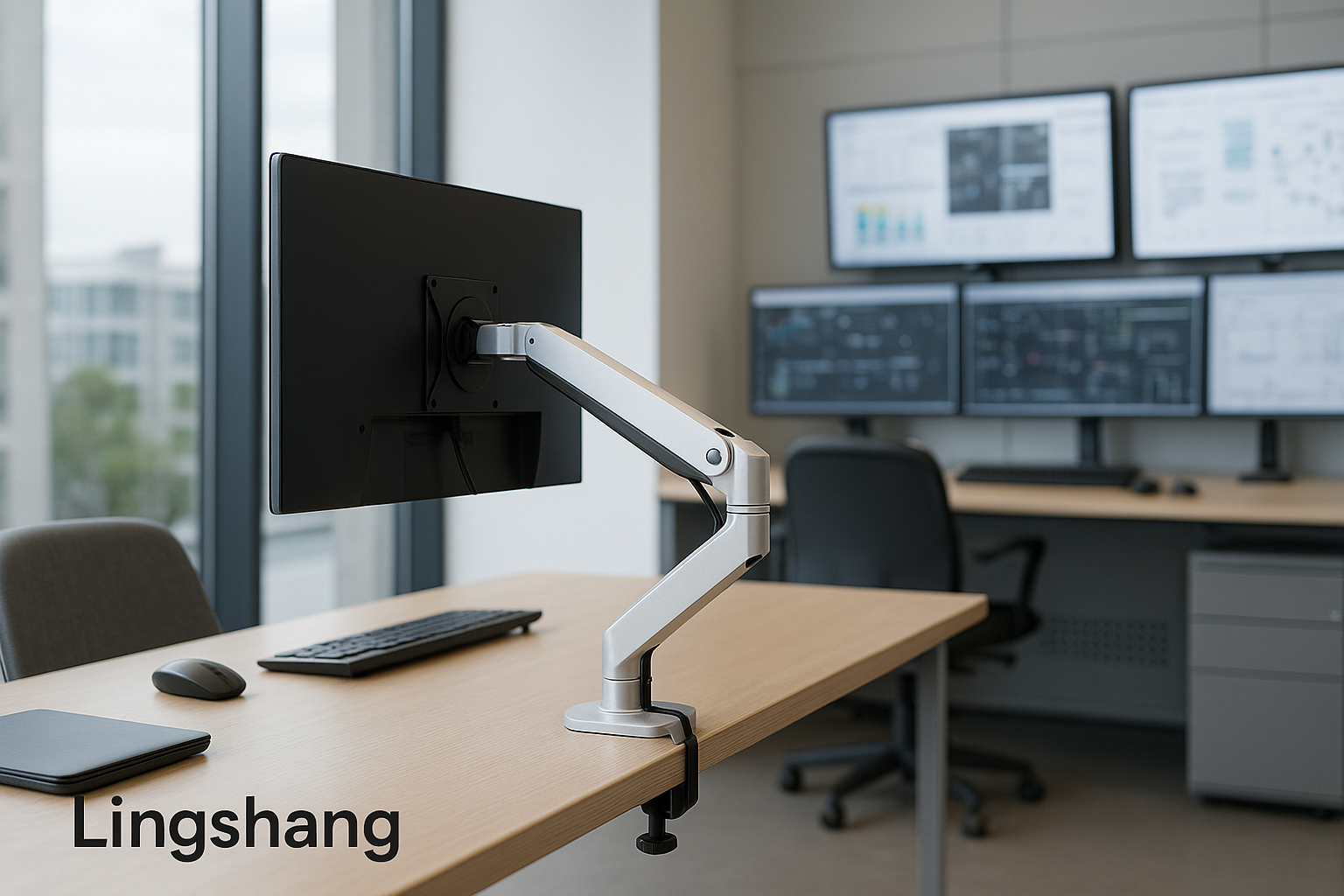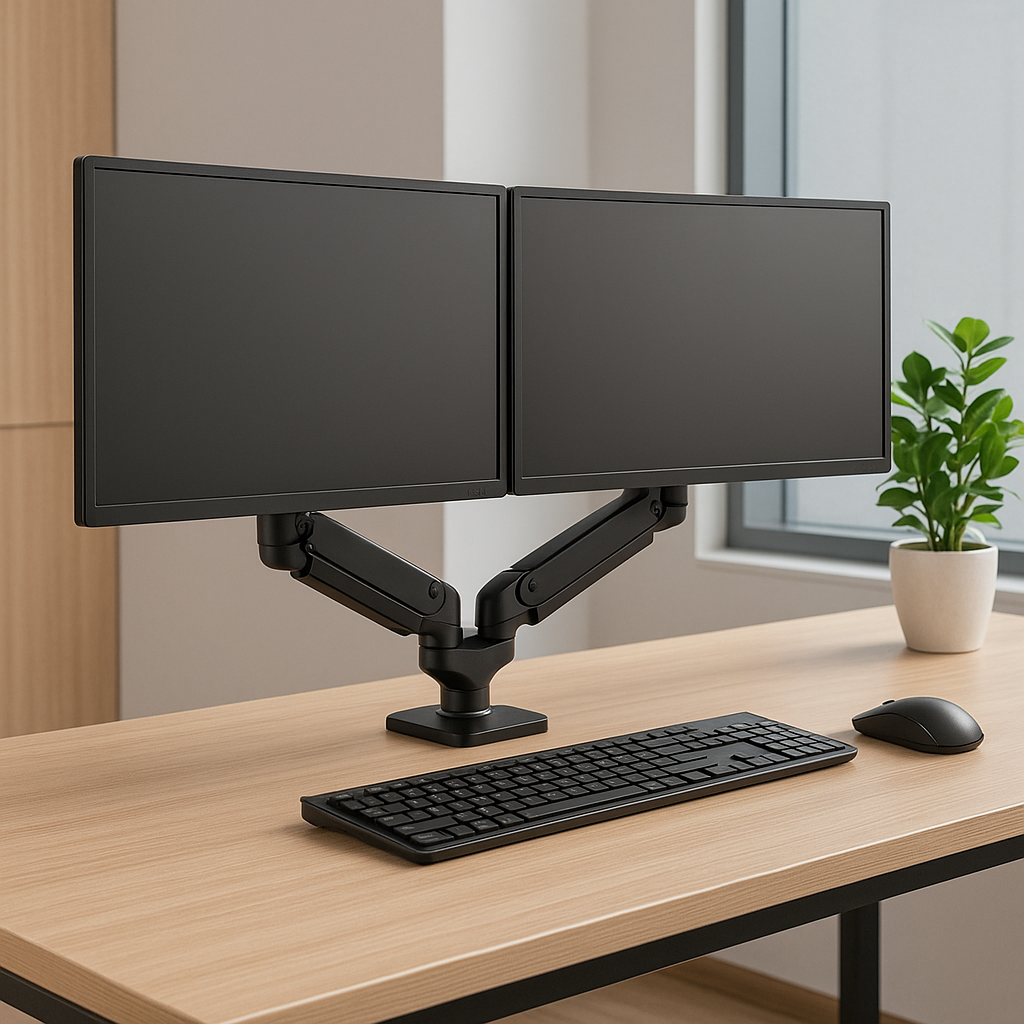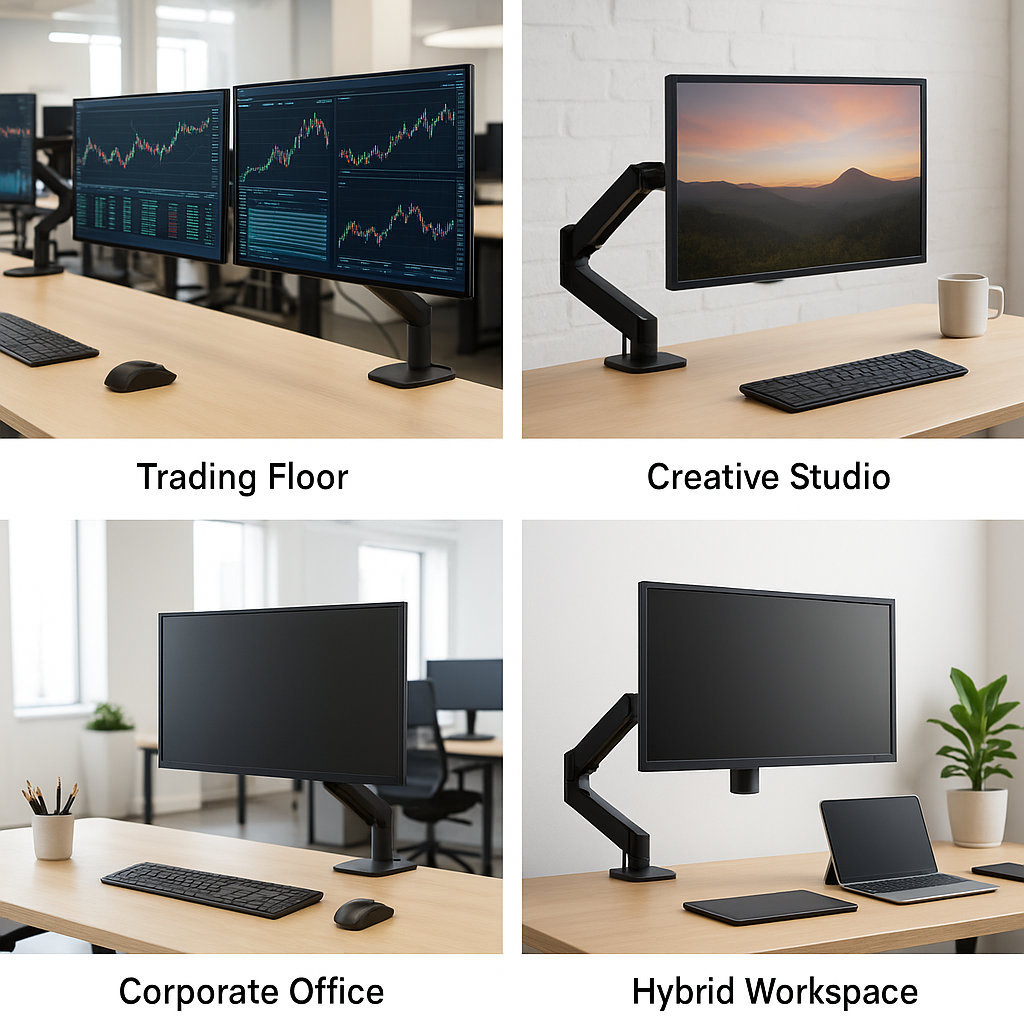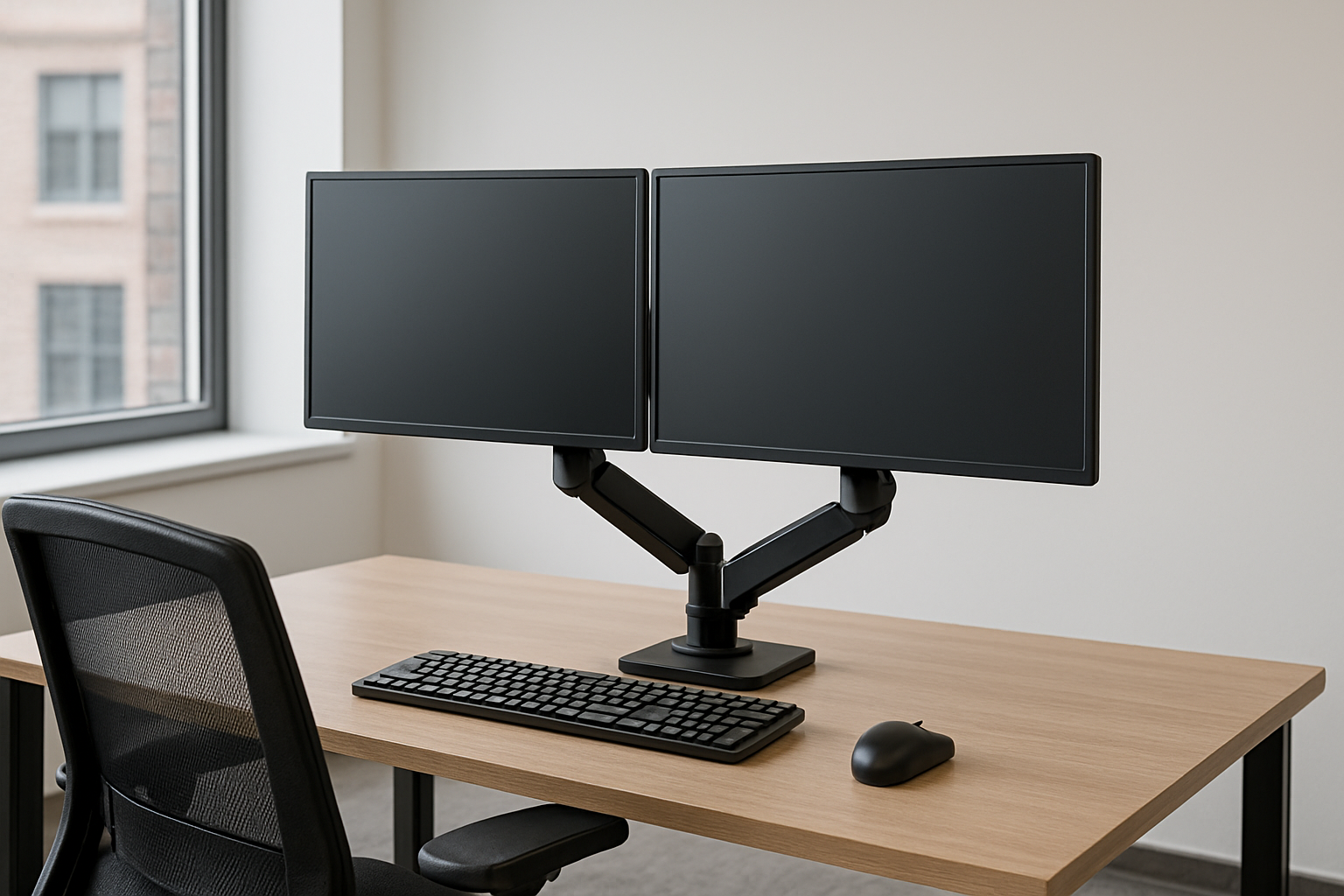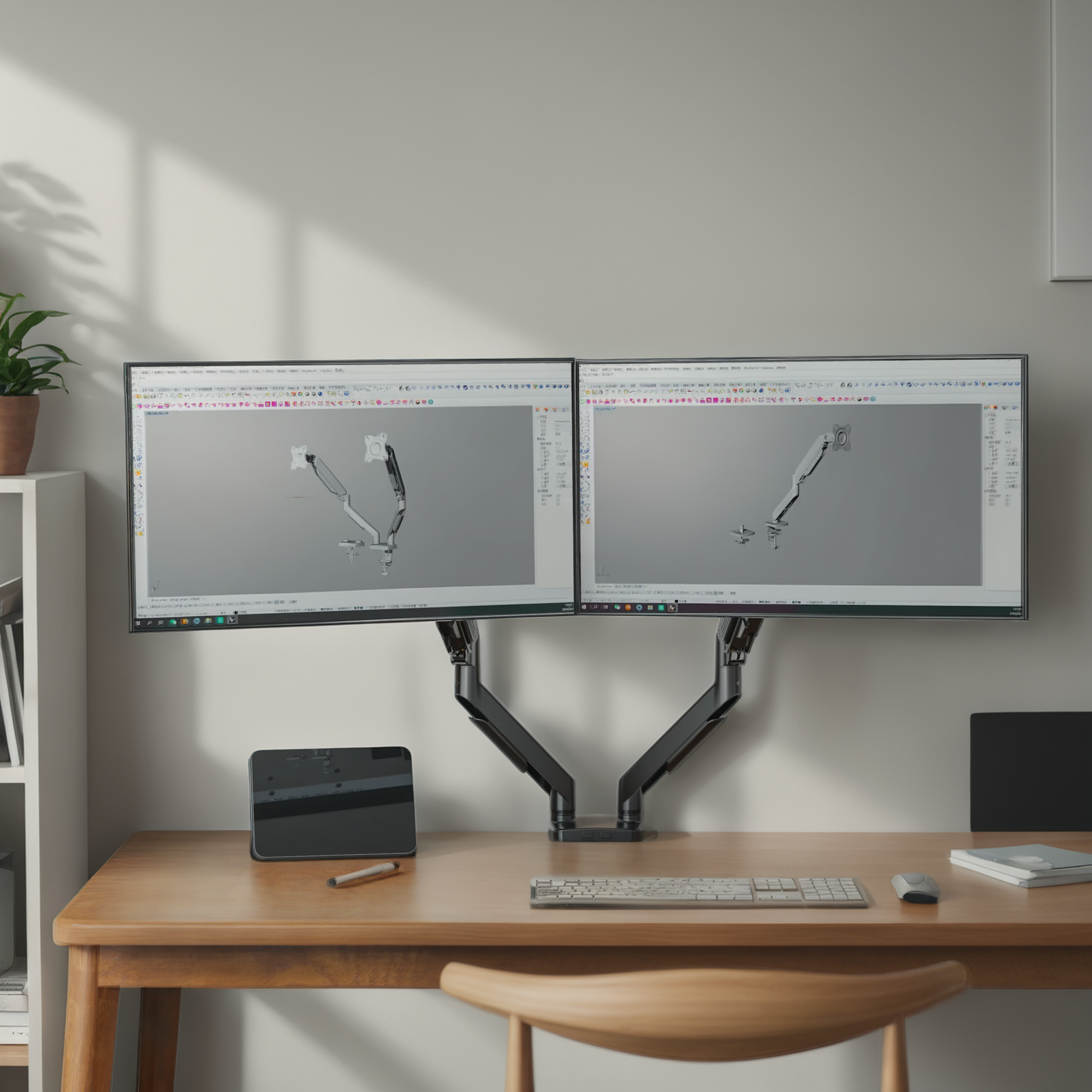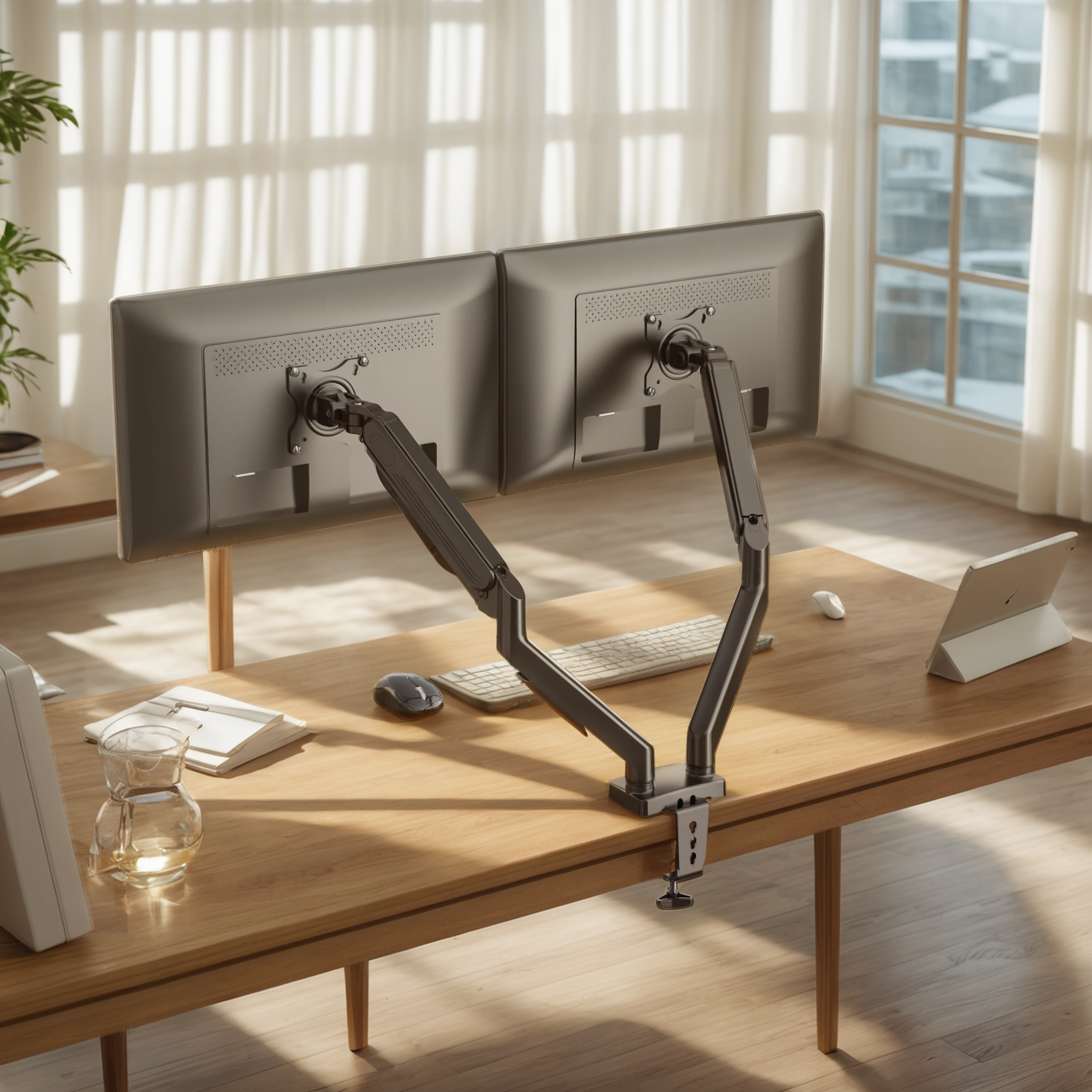
5 Dual Monitor Arm Setups That Boost Productivity
In a world driven by multitasking, dual monitors have become essential for professionals across industries. But placing two screens on a desk without support often leads toclutter, poor posture, and decreased productivity.
Many users report issues like:
-
Limited desk spacerestricting movement
-
Neck and eye strainfrom constant refocusing
-
Messy cables and misaligned screensbreaking focus
A dual monitor arm doesn’t just tidy up your workspace—it directly impacts how efficiently and comfortably you work. Below, we share five common setups withreal-use benefitsandtargeted recommendationsbacked by research.
1. Classic Side-by-Side Layout
Common issue:Discomfort from turning your head too often
Solution:Keep monitors at the same height, side by side, with a slight inward tilt. Use the centerline of your setup as the midpoint between screens.
Why it works:
-
Aligns withnatural head movement
-
Enhances multitasking across email, documents, or tabs
-
Great for remote workers, office professionals, and administrators
Supported by:lingshang'sadjustable dual screen arm, which supports symmetrical alignment with full tilt/swivel controls
2. Vertical Stacking for Depth Efficiency
Common issue:Limited desk width in compact workspaces
Solution:Mount one screen above the other using a height-adjustable arm. Place the main screen at eye level and the second for reference use (e.g., chat, code logs, video feed).
Why it works:
-
Saves horizontal space
-
Improves workflow for coders, editors, or developers
-
Reduces constant lateral head turning
Caution:Top screen must stay within comfortable vertical eye movement range (≤15 degrees up)
3. Inward Angle “V” Layout
Common issue:Flat monitor placement causes excessive eye movement
Solution:Slightly angle both screens inward. This creates a panoramic visual flow without forcing head rotation.
Why it works:
-
Ideal fordesigners, analysts, andmedia professionals
-
Enhances simultaneous cross-screen referencing
-
Helps reduce glare and increases engagement
Expert tip:Ensure the viewing distance remains equal to reduce eye strain
4. Main + Peripheral Screen Setup
Common issue:One screen dominates use while the other remains underused
Solution:Keep the primary monitor directly ahead; mount the secondary at a functional angle. This setup supportsfocused taskswhile maintaining access to background tools.
Best for:Writers, streamers, virtual assistants, and marketers using dashboards, reference docs, or chat
Pro Tip:lingshang’s dual mount arm allowsindependent adjustment per screen, ideal for this layout
5. Standing Desk + Dual Arm Integration
Common issue:Poor monitor height alignment during sit-stand transitions
Solution:Use monitor arms that move vertically and rotate freely to maintain ergonomic posture during height shifts.
Why it works:
-
Avoids forward head posture
-
Encourages regular posture changes throughout the day
-
Enhances focus and reduces spinal compression risk
Use with:Height-adjustable desks and lingshang’sergonomic dual monitor armsthat track motion smoothly
Data Doesn’t Lie: Dual Screens = Smarter Work
According to a study by theUniversity of Utah, users working with two monitors completed tasks28% fasterand experiencedless cognitive switching fatiguethan single-monitor users.
Ergonomic Research Institutedata reveals that monitor arm use results in a32% drop in reported neck painand a23% increase in user satisfactionwithin the first month of implementation.
Designing a Workspace That Works With You
Dual monitor arms aren't a luxury—they’re a strategic investment inhealth, focus, and output. Whether you're a creative professional, data analyst, or remote team lead, the way your screens are arranged can define your day.
With lingshang’s range offlexible, durable, and easy-to-install dual monitor arms, your workspace becomes an extension of your goals—not a barrier.
Explore our full lineup on ourhomepage
Need personalized setup advice?Visit our Contact Us page

